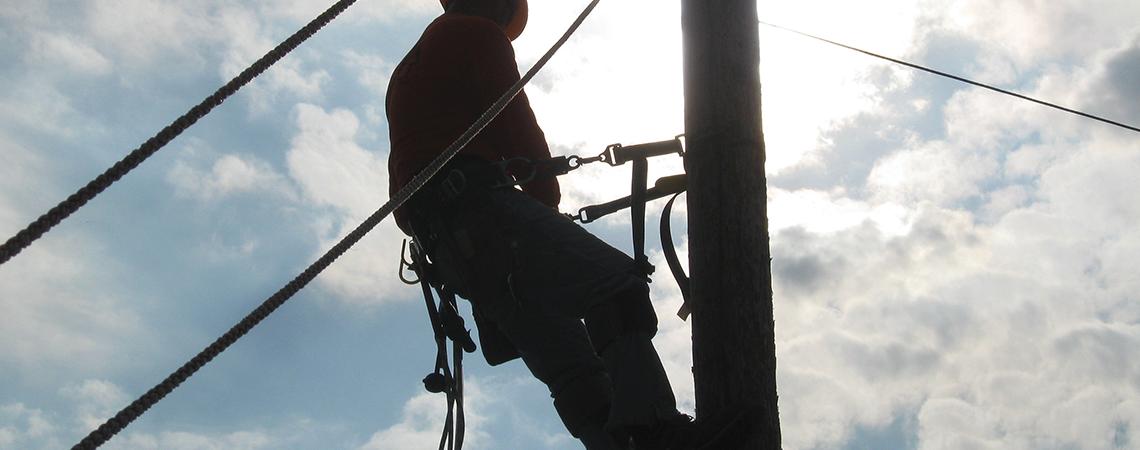April 12 is Lineworker Appreciation Day, when we take time to honor the bravery and dedication of the people who do the dangerous work of keeping our lights on every day. This year, we’re particularly mindful of that commitment as we hear the stories of workers from 17 Ohio co-ops who came together to restore power to remote areas of southern Ohio after a pair of powerful ice storms pounded the region in late February. We are grateful to these cooperative employees and to their families, who spared them from home for more than a week for this mission of helping others. We’re especially thankful that there were no injuries during the restoration, despite the hazardous conditions.
It’s easy to take the luxury and convenience of electricity for granted. It’s invisible and so reliably available that we seldom give it a second thought. Even after the devastation of those southern Ohio ice storms, we took comfort in knowing that once our workers got the lines restored, those lights would go right back on, thanks to a reliable source of electricity.
People in Texas recently learned that we can’t view the availability (or affordability) of our electric supply as a “given.” A polar vortex precipitated a massive failure of the Texas electric grid, spurring countless questions and few answers.
Let’s start with the facts: The nation’s second-largest state has weathered cold stretches in the past, but in February, a record-setting chill settled over Texas and the surrounding region and spurred an unparalleled level of demand for electricity. The Texas electric grid is largely isolated from the rest of the U.S. power grid, which made it impossible to import the enormous quantities of power needed to balance supply with that demand. About half of Texas’ electric generation was inoperable for nearly a week, because ice and freezing temperatures affected natural gas-fired generators, wind and solar production, some coal plants, and one nuclear power facility. The natural gas supplies that were available quickly became very expensive — more than 100 times the traditional cost. The design of the Texas electricity market allowed prices to rise to roughly 300 times the “normal” price. The result?
- Hours of “rolling blackouts” (planned service interruptions) to balance supply with demand and to prevent a complete crash of the system.
- Outrageous residential consumer bills.
- Several power providers declaring bankruptcy, including Texas’ largest co-op.
- Human suffering and financial devastation.
Poorly designed wholesale electricity markets produce undesirable outcomes. The Texas electric market may be designed worse than others, but newer market-based approaches are employed in many parts of the country, including Ohio, and all have significant, obvious weaknesses. The rules governing our electric grid have become politicized. The rarity of significant weather events, like the one in Texas, provides time to dither, as well as excuses for those unwilling to acknowledge obvious shortcomings. We’re all accountable for allowing grid failure to happen. It’s crucial that we demand common-sense solutions.
How can you help? Support your co-op’s public policy efforts to assure reliable and affordable electricity. Let your elected officials know that you expect better for Ohioans than Texans got from their policymakers and insist that legislators apply common sense to proposed modifications of our electric system.
Finally, give a “thank you” to the lineworkers who keep the power on and make repairs on the rare days when the lights go out.









